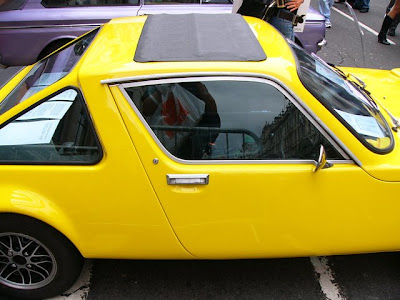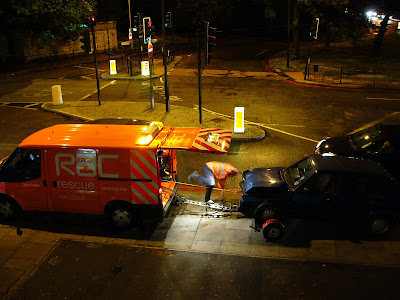 The Clan Crusader typically had a Glass Reinforced Plastic (GRP) Monocoque (French for single [mono] and shell [coque]), body with Hillman Imp Sports Engine from the Rootes Group (later Chrysler Europe).
The Clan Crusader typically had a Glass Reinforced Plastic (GRP) Monocoque (French for single [mono] and shell [coque]), body with Hillman Imp Sports Engine from the Rootes Group (later Chrysler Europe). The Clan Crusader was designed by a group of engineers who had previously worked for Lotus and were led by Paul Haussauer with John Frayling focusing on the styling. The Clan company was set up in 1969, and production started in 1971 at a new factory in Washington set up with the help of a government grant.
The Clan Crusader was designed by a group of engineers who had previously worked for Lotus and were led by Paul Haussauer with John Frayling focusing on the styling. The Clan company was set up in 1969, and production started in 1971 at a new factory in Washington set up with the help of a government grant. The Clan Crusader was available fully built or in a kit version. Although the car received good reviews and achieved some competition success, it was expensive at £1,400 when compared with rivals and as a result the company shut down in November 1973. Total production of the first phase of the Clan Crusader was 315.
The Clan Crusader was available fully built or in a kit version. Although the car received good reviews and achieved some competition success, it was expensive at £1,400 when compared with rivals and as a result the company shut down in November 1973. Total production of the first phase of the Clan Crusader was 315. The exact specs of the Clan Crusader (licence plate: NYL 7L) in these Car Journal photos are as follows:
The exact specs of the Clan Crusader (licence plate: NYL 7L) in these Car Journal photos are as follows: Engine
EngineRear mounted, 55 BHP, 4 Cylinder, 875 CC. All aluminium, Single overhead Camshaft with Twin Spromberg Carburettors. Based on the Coventry Climax Featherweight design.
 Transmission
TransmissionTransaxel containing 4 speed all syncromesh gearbox with Hypod bevel final drive
 This Clan Crusader has been an on-going restoration project since 1992 and the car has been off the road and dry stored. It was put back on the road for the Clan Owners Club 30th anniversary on 1st June 2008.
This Clan Crusader has been an on-going restoration project since 1992 and the car has been off the road and dry stored. It was put back on the road for the Clan Owners Club 30th anniversary on 1st June 2008.



 The Porsche Panamera is the fifth range from Porsche (Porsche Boxter, Porsche Cayman, Porsche 911, Porsche Cayenne) and is developed to be a strong competitor to the Volkswagen four-door coupé, the future Aston Martin Rapide and the Mercedes CLS.
The Porsche Panamera is the fifth range from Porsche (Porsche Boxter, Porsche Cayman, Porsche 911, Porsche Cayenne) and is developed to be a strong competitor to the Volkswagen four-door coupé, the future Aston Martin Rapide and the Mercedes CLS.